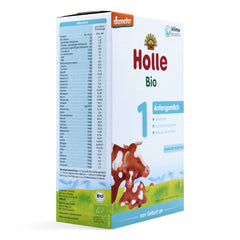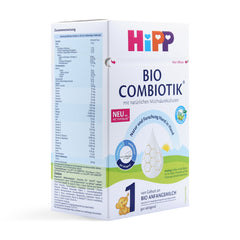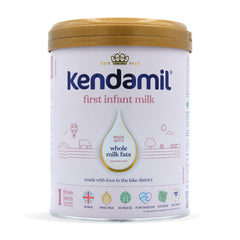Kangaroo Care Guide For Parents
29 hours of research 4 minute read

Kangaroo Care is more than just a cuddly name; it represents a profound and essential practice in neonatal care. But what is Kangaroo Care exactly? This method involves skin-to-skin contact between a parent and their newborn, transforming the way we approach infant care, particularly for premature and low birth weight babies. In this blog, we will delve into the benefits, practices, and emotional impact of Kangaroo Care, highlighting why it has become a cornerstone in modern neonatal care.
The Science Behind Kangaroo Care
The benefits of Kangaroo Care are deeply rooted in biology and human physiology. When a newborn is placed against the parent’s chest, several physiological mechanisms are activated:
1. Temperature Regulation
One of the most critical aspects of neonatal care is maintaining the infant’s body temperature. Newborns, especially preterm ones, have underdeveloped thermoregulation systems. Skin-to-skin contact helps stabilize their body temperature through the parent's body heat, often more effectively than incubators.
2. Heart and Respiratory Stability
Skin-to-skin contact has been shown to stabilize the heart rate and breathing patterns of newborns. The rhythmic breathing and heartbeat of the parent provide a soothing environment, which can reduce episodes of apnea (pauses in breathing) and bradycardia (slow heart rate).
3. Enhanced Breastfeeding
Kangaroo Care significantly enhances breastfeeding success. The close contact stimulates the release of prolactin and oxytocin in the mother, hormones essential for milk production and ejection. Babies are also more likely to latch on correctly and feed effectively.
4. Improved Weight Gain
The stability provided by Kangaroo Care supports better digestion and nutrient absorption, leading to improved weight gain. Additionally, the frequent breastfeeding sessions associated with this practice ensure that the baby receives adequate nutrition.
5. Reduced Stress and Pain
Physical contact with the parent has a calming effect on newborns. Studies have shown that Kangaroo Care can reduce stress hormones and improve the infant’s pain tolerance. This is particularly beneficial during medical procedures or blood draws.
Emotional and Psychological Benefits
Beyond the physiological advantages, Kangaroo Care offers profound emotional and psychological benefits for both the infant and the parent.
Bonding and Attachment
The early moments of life are crucial for developing a strong parent-infant bond. Kangaroo Care facilitates this bonding through direct physical contact. The parent learns to read the baby’s cues, fostering a deep connection and a sense of confidence in caring for their newborn.
Parental Confidence and Mental Health
For parents, especially those with preterm or medically fragile infants, Kangaroo Care provides a sense of empowerment and involvement in their baby’s care. It can alleviate feelings of helplessness and reduce parental anxiety and depression, promoting a positive mental health outcome.
Infant Development
The secure and comforting environment of Kangaroo Care supports the baby’s emotional and cognitive development. The warmth and presence of the parent provide a sense of security, promoting better sleep patterns and overall development.
How to Practice Kangaroo Care
Kangaroo Care is simple to practice, but it requires a comfortable and safe environment. Here are some guidelines:
1. Environment
Ensure the room is warm and quiet. Privacy is essential to allow the parent and baby to relax without interruptions.
2. Positioning
The baby should be placed upright between the parent's breasts, dressed only in a diaper. The parent can wear a button-down shirt or a specially designed Kangaroo Care shirt to facilitate skin-to-skin contact.
3. Duration
Ideally, Kangaroo Care sessions should last at least an hour to allow the baby to fully benefit from the contact. However, even shorter sessions can be beneficial.
4. Consistency
Regular Kangaroo Care sessions, multiple times a day if possible, yield the best results. Consistency helps in establishing a routine and provides ongoing benefits.
5. Safety
Always ensure the baby’s head is turned to one side and their airway is clear. The parent should be in a comfortable position to support the baby securely.
The Role of Healthcare Providers
Healthcare providers play a critical role in promoting and facilitating Kangaroo Care. Here’s how they can support this practice:
Education and Training
Parents should be informed about the advantages and methods of Kangaroo Care by healthcare professionals. This entails addressing the parents' worries and inquiries as well as providing an example of appropriate placement.
Supportive Environment
Hospitals and neonatal units should create a supportive environment that encourages Kangaroo Care. This can include private rooms, comfortable seating, and flexible visiting hours to allow parents to spend extended periods with their newborns.
Monitoring and Guidance
Despite the fact that Kangaroo Care is generally safe, medical professionals should keep an eye on the infant's condition throughout the sessions. They can provide advice on how to modify the procedure to suit each infant's unique requirements, especially if they have health issues.
Challenges and Solutions
Despite its benefits, Kangaroo Care can face challenges. Some parents may feel anxious about handling a fragile preterm infant, or there may be cultural or logistical barriers. Here are some common challenges and potential solutions:
Parental Anxiety
Parents may worry about holding their tiny, vulnerable baby. Healthcare providers can alleviate these fears through education, hands-on demonstrations, and continuous support.Parents may worry about holding their tiny, vulnerable baby. Healthcare providers can alleviate these fears through education, hands-on demonstrations, and continuous support.
Cultural Barriers
In some cultures, skin-to-skin contact may not be widely accepted. It’s important to respect cultural values while gently educating parents about the benefits of Kangaroo Care and finding culturally sensitive ways to implement it.
Logistical Issues
Space constraints and hospital policies can sometimes hinder the practice of Kangaroo Care. Hospitals can address these issues by prioritizing family-centered care and making infrastructural adjustments to support Kangaroo Care.
Research and Future Directions
Ongoing research continues to uncover new insights into the benefits of Kangaroo Care. Recent studies are exploring its impact on long-term developmental outcomes, neurodevelopment, and the immune system. Researchers are also investigating the benefits of Kangaroo Care beyond the neonatal period, such as its effects on older infants and children with special needs.
Technological Integration
Innovative technologies are being developed to support and enhance Kangaroo Care. Wearable devices that monitor vital signs and smart clothing that facilitates skin-to-skin contact are some examples. These technologies aim to make Kangaroo Care more accessible and convenient for parents and healthcare providers.
Global Implementation
Efforts are underway to promote Kangaroo Care in resource-limited settings. Organizations like the World Health Organization (WHO) and UNICEF are working to integrate Kangaroo Care into neonatal care protocols worldwide, recognizing its potential to save lives and improve health outcomes in diverse healthcare settings.
Kangaroo Care: The Warm Embrace of Healing
Kangaroo Care is a simple yet effective technique that has several advantages for new parents and babies. This approach has revolutionized neonatal care by offering a safe, natural means of promoting the growth and well-being of infants. It is becoming increasingly evident that Kangaroo Care—a warm embrace of healing—is here to stay as research on its significant effects continues. We can guarantee that every infant has the best start in life—wrapped in the consoling arms of their parents—by endorsing and funding Kangaroo Care.
Most Popular Formulas to Support Your Kangaroo Care Journey
References:











Carmen Canales -
I always figured swaddling was the best way to keep my baby cozy, but now I see how great kangaroo care is for bonding and sleep. I never realized skin-to-skin could make such a big difference!